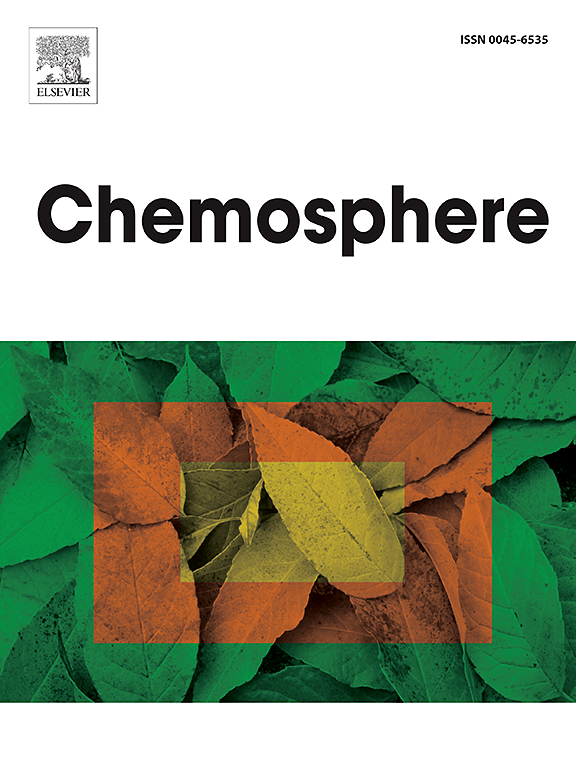Green lithium extraction and recovery using a task-specific deep eutectic solvent
IF 8.1
2区 环境科学与生态学
Q1 ENVIRONMENTAL SCIENCES
引用次数: 0
Abstract
The growing demand for lithium-ion batteries (LIBs) in electronic devices and electric vehicles has led to an increase in spent LIB waste, posing environmental risks and exacerbating concerns over lithium resource depletion. Traditional recycling methods often rely on toxic organic solvents, highlighting the urgent need for safer, more sustainable alternatives. In this study, a novel task-specific deep eutectic solvent (DES) composed of dibenzoylmethane (DBM) and trioctylphosphine oxide (TOPO) in a 1:1 molar ratio was developed for selective lithium extraction. Unlike conventional DESs, the DBM/TOPO-DES is hydrophobic, enabling efficient liquid–liquid extraction by minimizing miscibility with aqueous solutions. Under optimized conditions—pH 12, 30 s of vortexing, room temperature, and a 2:1 aqueous-to-DES phase ratio—the system achieved over 99% lithium extraction efficiency. It also exhibited high extraction efficiency with EDTA as a masking agent for lithium in the presence of commonly co-existing ions such as Co(II), Cu(II), and Ni(II), typically present in LIB cathode materials. Lithium was efficiently back-extracted using 0.7 M HCl, and the DES maintained excellent performance across five extraction cycles, demonstrating its reusability. Compared to other DES-based approaches, this system combines rapid kinetics, high extraction efficiency, and a greener profile without compromising performance. Thermal analysis, phase behavior, and spectroscopic characterization confirmed the stability and formation of the DES. Overall, the DBM/TOPO-DES offers a sustainable and effective alternative to traditional solvent systems, advancing green chemistry principles and contributing to the efficient recovery of critical lithium resources from spent batteries.

绿色锂提取和回收使用的任务特定的深共晶溶剂
电子设备和电动汽车对锂离子电池(LIB)的需求不断增长,导致废旧锂离子电池废物增加,带来环境风险,并加剧了对锂资源枯竭的担忧。传统的回收方法通常依赖于有毒的有机溶剂,因此迫切需要更安全、更可持续的替代品。在本研究中,以二苯甲酰甲烷(DBM)和氧化三辛基膦(TOPO)为原料,以1:1的摩尔比制备了一种用于选择性锂萃取的新型深度共晶溶剂(DES)。与传统的des不同,DBM/TOPO-DES是疏水性的,通过最大限度地减少与水溶液的混溶,实现了高效的液-液萃取。在优化条件下,ph值为12,漩涡时间为30 s,室温,水与des的相比为2:1,该系统的锂提取效率超过99%。EDTA作为掩蔽剂,在钴(II)、铜(II)和镍(II)等锂离子共存的情况下,对锂的萃取效率也很高,这些离子通常存在于锂离子阴极材料中。使用0.7 M HCl对锂进行了高效的反萃取,DES在5次萃取循环中均保持了优异的性能,证明了其可重复使用。与其他基于des的方法相比,该系统结合了快速动力学,高萃取效率和更环保的外形,而不影响性能。热分析、相行为和光谱表征证实了DES的稳定性和形成。总体而言,DBM/TOPO-DES为传统溶剂体系提供了可持续和有效的替代方案,推进了绿色化学原则,并有助于从废电池中高效回收关键锂资源。
本文章由计算机程序翻译,如有差异,请以英文原文为准。
求助全文
约1分钟内获得全文
求助全文
来源期刊

Chemosphere
环境科学-环境科学
CiteScore
15.80
自引率
8.00%
发文量
4975
审稿时长
3.4 months
期刊介绍:
Chemosphere, being an international multidisciplinary journal, is dedicated to publishing original communications and review articles on chemicals in the environment. The scope covers a wide range of topics, including the identification, quantification, behavior, fate, toxicology, treatment, and remediation of chemicals in the bio-, hydro-, litho-, and atmosphere, ensuring the broad dissemination of research in this field.
 求助内容:
求助内容: 应助结果提醒方式:
应助结果提醒方式:


